One of the downsides of the "family" of template holes Macdonald and Raynor built -- particularly their quartet of par threes -- is the ease with which those like holes are compared.
As a result, the discussion of some fantastic holes will be framed negatively because of a direct comparison to the Redan at National, Short at Fishers Island or Biarritz at Yale, whereas the same hole were it not a template would be discussed only in terms of its own merits.
An example of that is an analysis of Yale's par threes such as this from Darius Oliver's fantastic "Planet Golf USA" book:
"Interestingly, the par threes here are the same foursome found at the nearby Fishers Island Club, and again they show the limits of imitation versus creation. Although the Short, Redan and Eden holes are quite good, they are not among Raynorís best and these replicas do get less interesting the more of them you see."Were the Short 5th, Redan 13th and Eden 15th three unnamed holes by another architect, they would be discussed for their many strengths instead of compared to some of the best holes in golf.
When talk turns to underrated and underappreciated golf courses, Yale deserves to be the first topic of conversation.
The course is filled with unique and memorable holes and features.

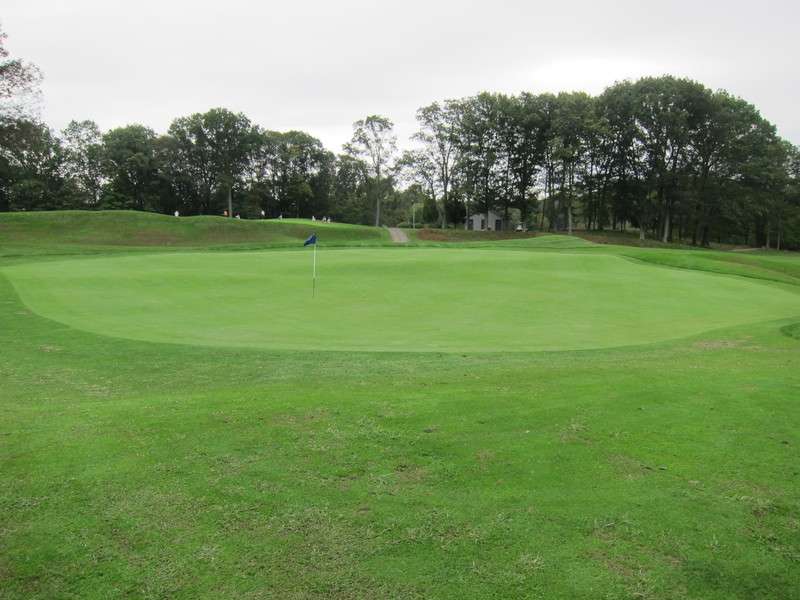
The
1st hole is a fairly sedate par four
(410/383 yards) until you reach the bold green that sets the stage for the rest of the putting surfaces that follow. It's a fantastic way to start the round.
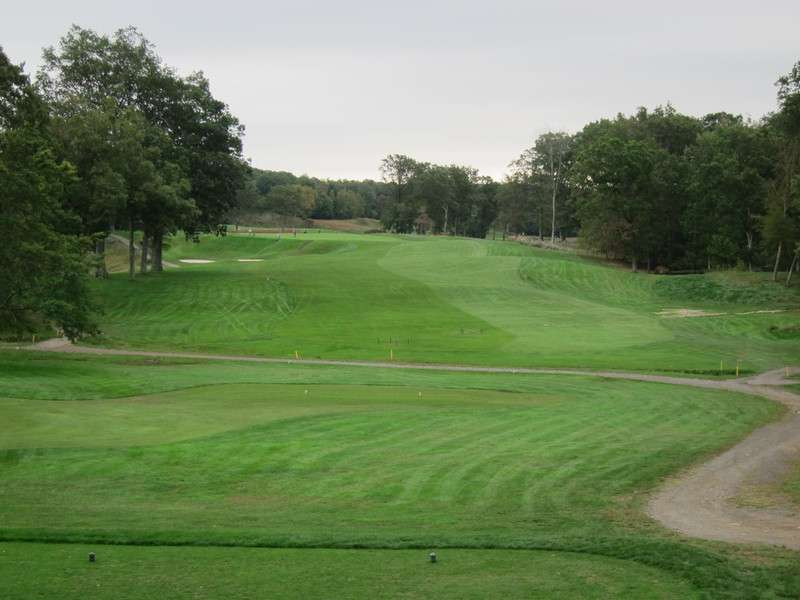

The
2nd is shorter
(374/344), but ratchets up the drama at the green, with the left-hand bunkers sitting a good 15-20ft below the surface. With a pin toward the back, it seems the chance of dunking the ball into purgatory becomes greater.

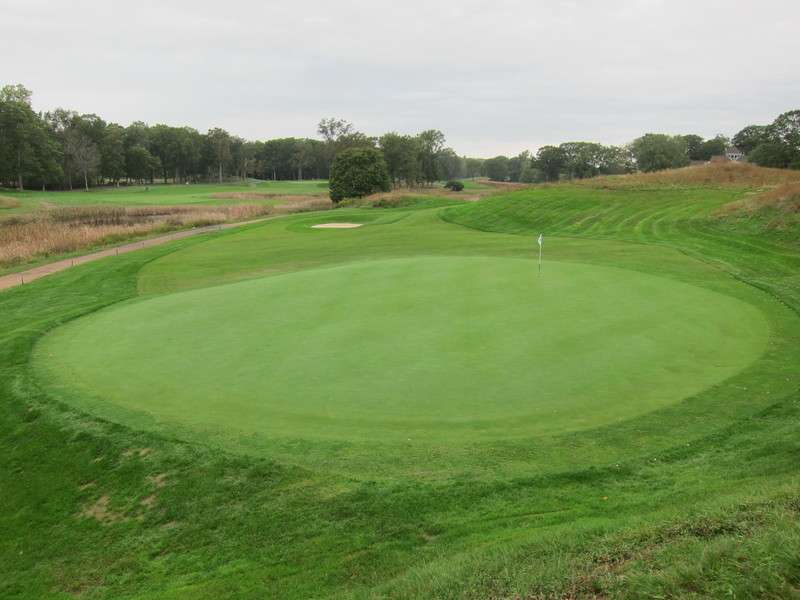
I'm informed that only two greens on the course have been altered from what Raynor designed -- this at the
3rd (411/379) and the 16th. What used to be a double punchbowl that was partially visible if you drove close to the water is now a pancake that's blind whether you thread it down the right or heave one weakly to the left.

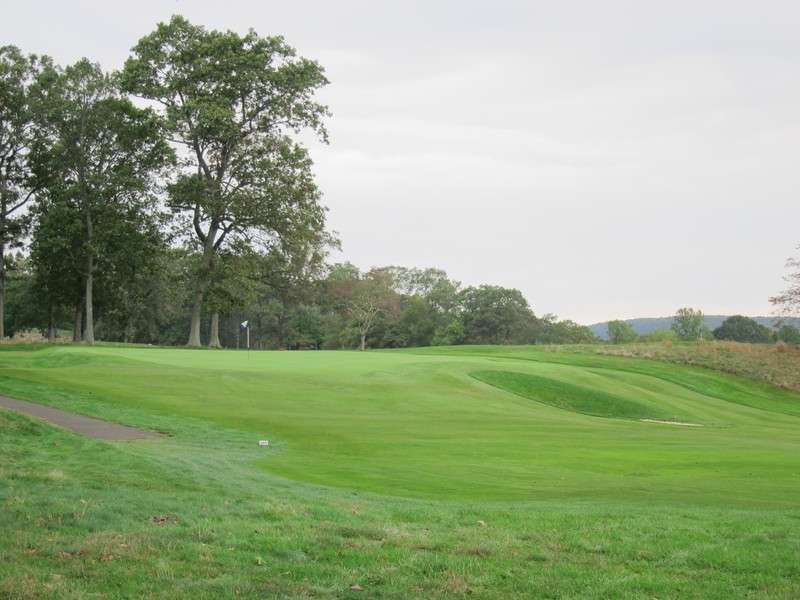
The
4th (437/426) asks you to drive long into a narrow neck between water and forest, before a slightly uphill mid-iron to a deceptively steep green. This might be an example of holes being named for the sake of it, because there's not much similarity here to the original Road Hole or to other MacRaynor templates I've played, but still a very good hole.
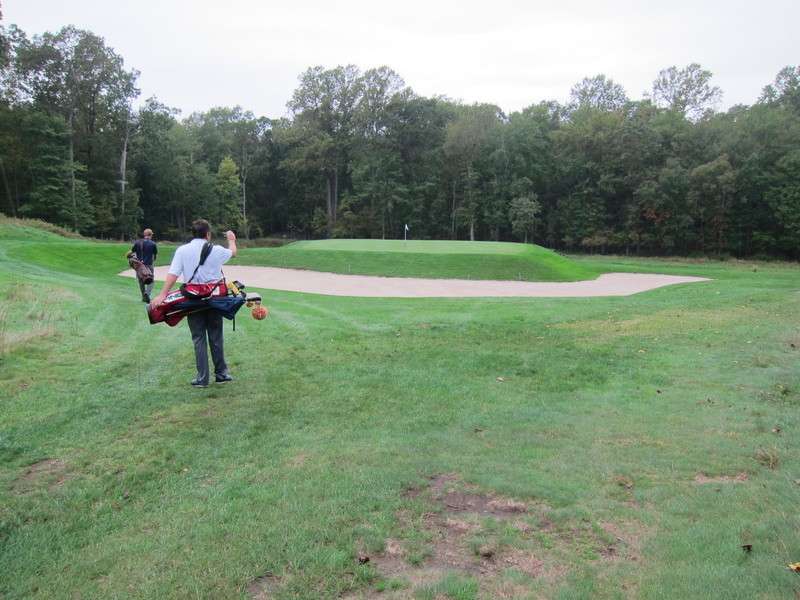
Only one (fairly poor) photo of the Short hole, the
5th (147/138). It looks better from the tee, but this still shows what a great, tiny target is presented, with the green here sloping more than it appears, like at the 5th.
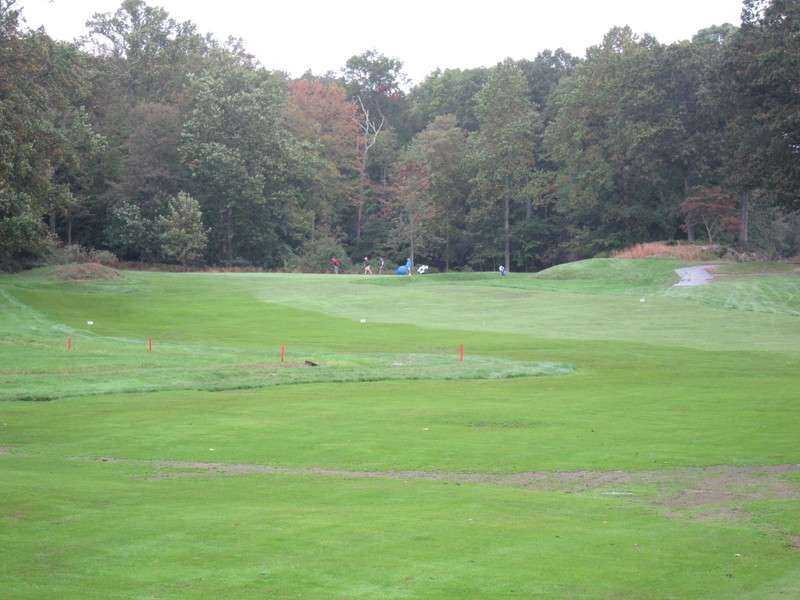
The
6th (421/349) seems to me to set up far better from the back tee than the forward tee. From back there, it is almost 260 yards to the corner of the dogleg (guarded inside by a snaking creek), where from the forward tee it's just 180 yards and it's too easy to club a drive to within wedge range of a fairly flat green. Not among the best holes on the course, but we're about to enter one of the finest stretches in golf.
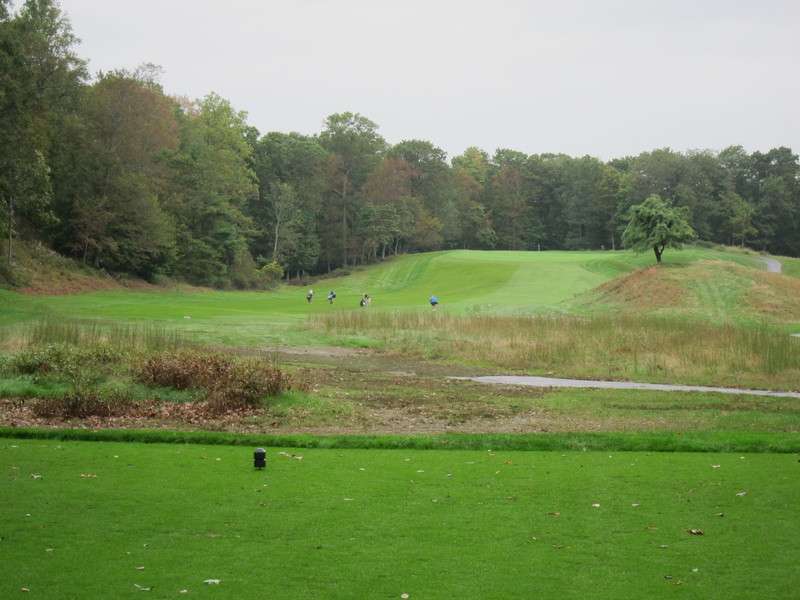
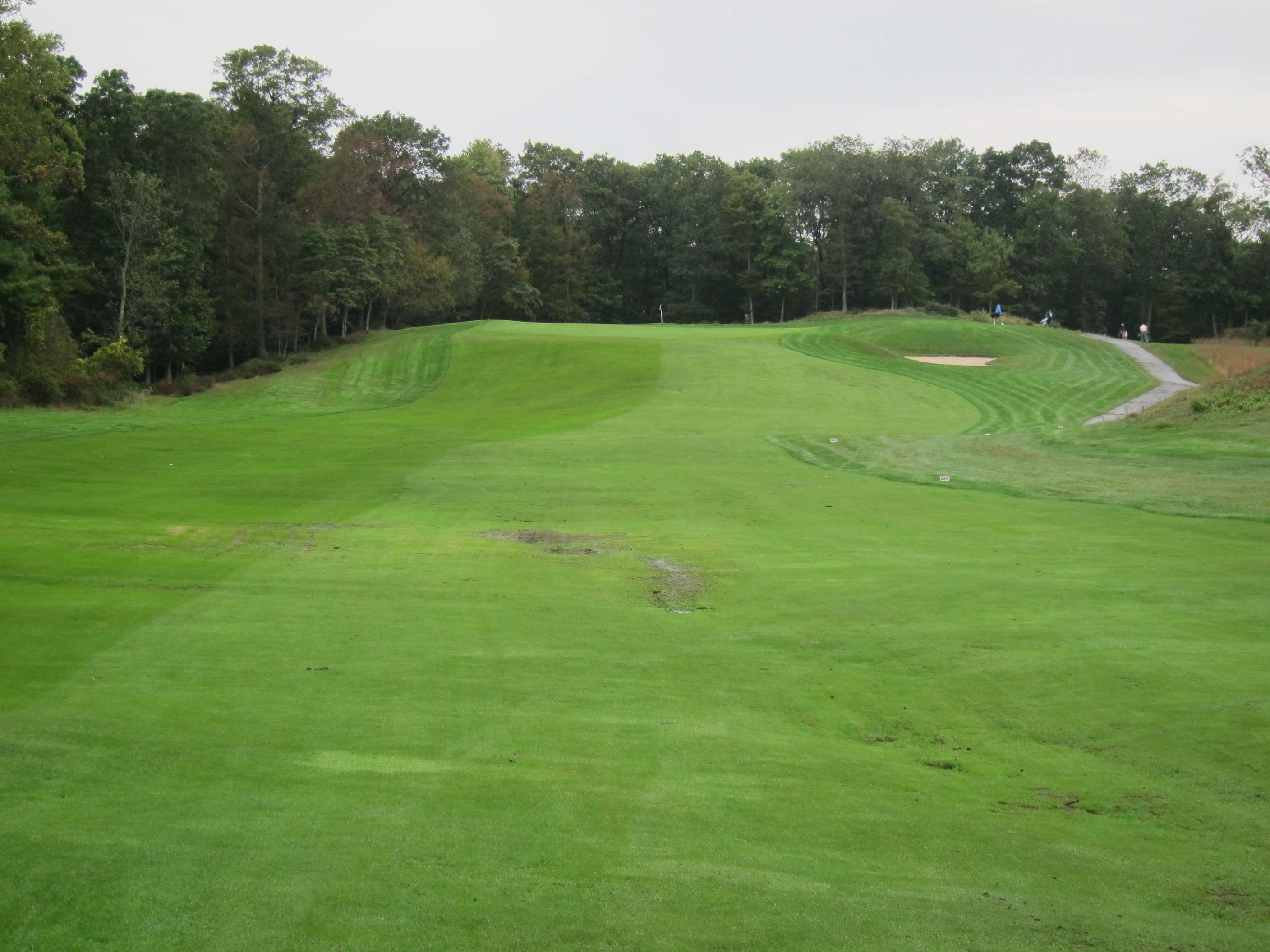
Remarkable that all of this
7th hole (377/359) and the next are completely manufactured, raised up above what was originally a swampy wetland. More remarkable still that such dramatic construction was carried out in the mid-1920s. This is a fantastic hole, largely for the demanding approach and slick green. Even after Irene and Lee had passed through within a few weeks of my round here, a 10ft putt from above the green was fairly nerve-wracking.

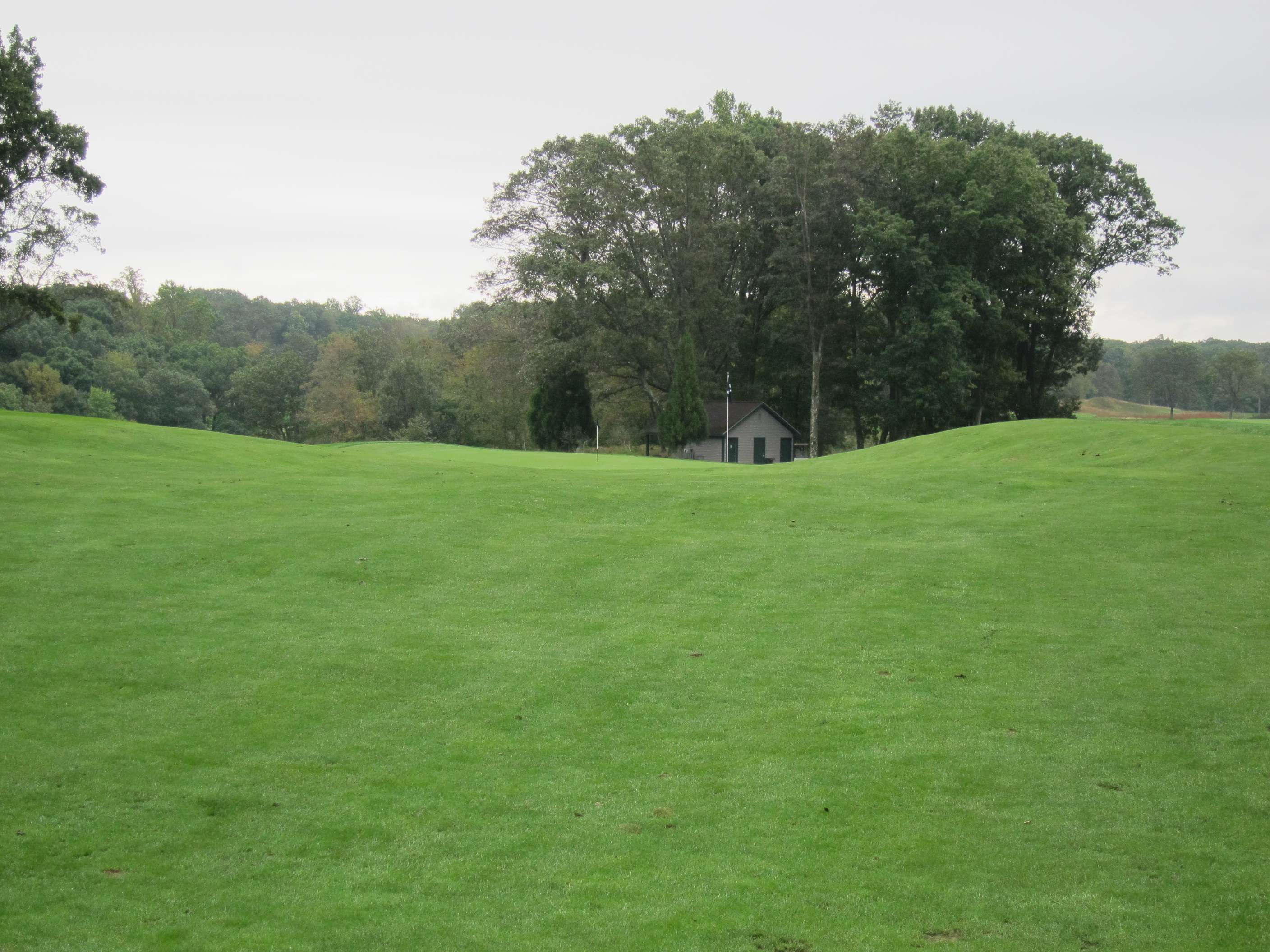

Here's a hole they just don't build anymore at the
8th (406/383). The drive gets less attention than the approach and recoveries because of how bold and fun the green is, but the tee shot still has a lot in it, with the chance to cut the corner and shorten the approach or play further right and hope to end up in "Raynor's Notch" -- a channel cut from the hill that allows a precious view of the green. The kickpad on the right of the gren is another great feature that is more useful from the left than from the right. Finally, the bunkers are even more savage than those flanking the 2nd green. In all, this us just one of those great holes you could play from sunup to sundown with a smile on your face.


We finally made it to the
9th (213/196)! When I was about 13 years old and had just fallen for the game of golf in a big way my grandad had a book called "How To Play Par Threes". It featured about 10 of the world's best one-shotters and the author played them with the club pro, who detailed the smart way to play the hole for different levels of player. I immediately noticed there was something cool about this hole and -- 10,000 miles away in country Australia -- lamented the fact I would never play it. But then this wonderful thing called GCA.com happened and lo and behold I was standing on the tee here with a club in hand and butterflies in my stomach. There's not much to say that hasn't already been said, but I will say there is no way a photo can do this setting or the green justice. It's a marvellous hole.
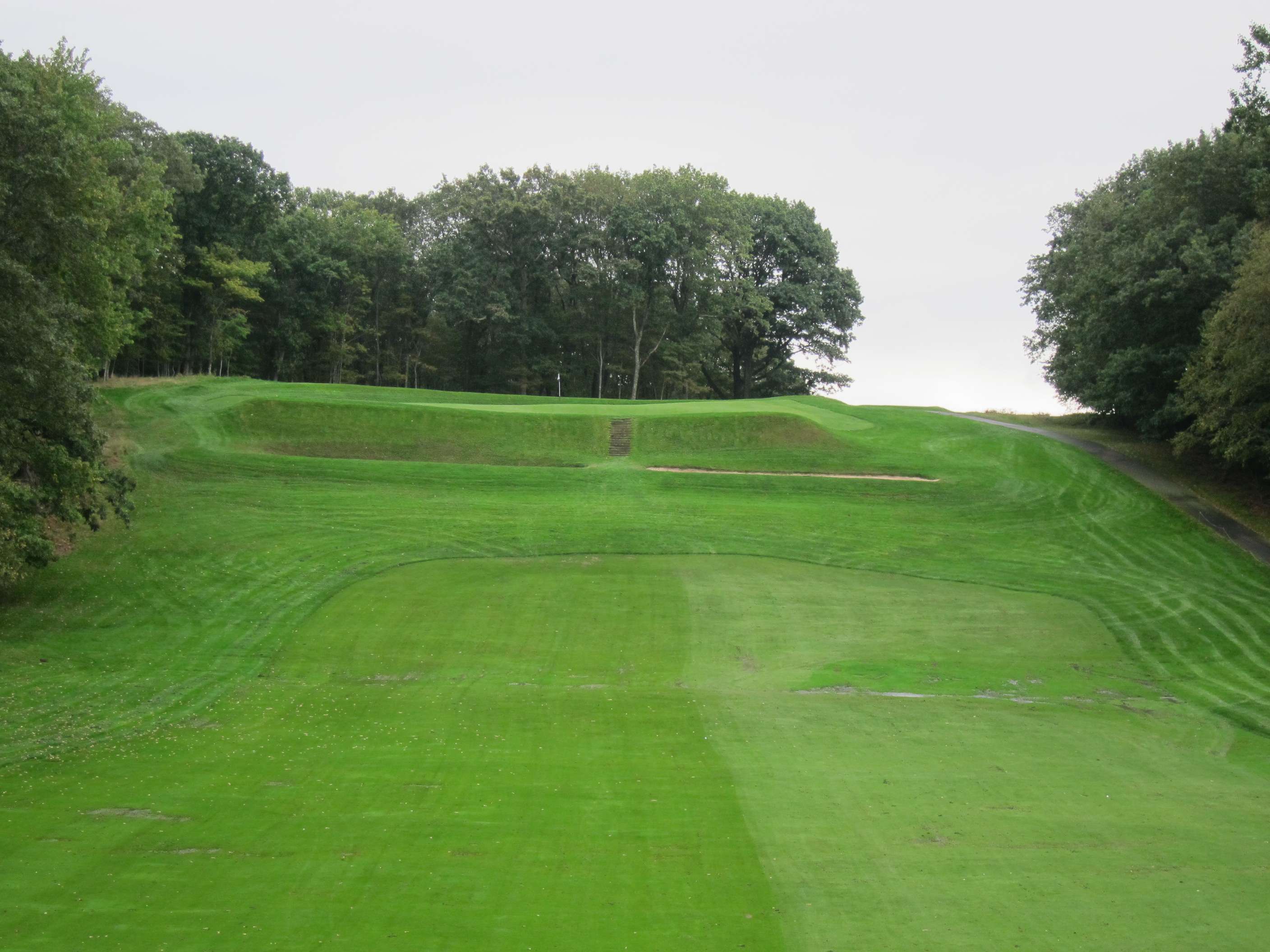
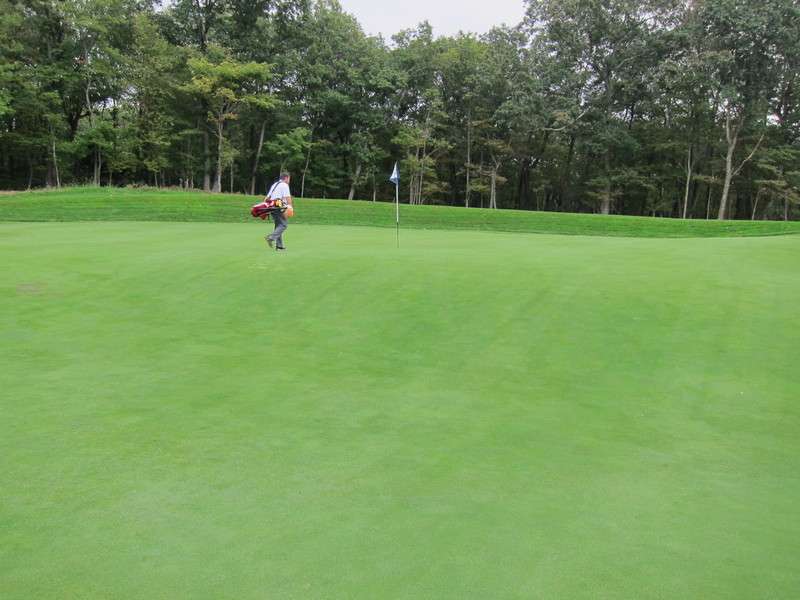
Golf doesn't come more dramatic than the
10th (396/360). A drive over a ridge to a blind landing area, an approach 40ft or so uphill, a green with a steep slope between tiers. One I'd have described as "a love/hate hole" if I had ever met a single person who doesn't love it!
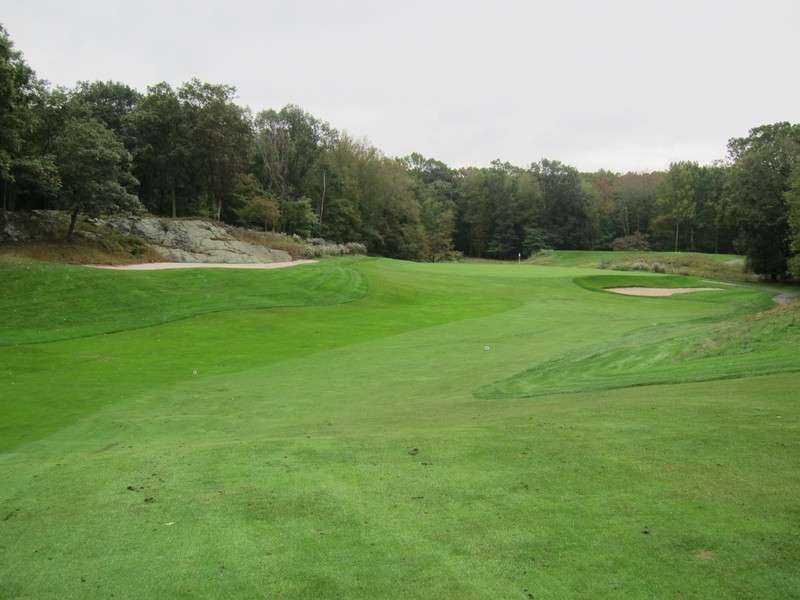
At Yale, I highly recommend playing the Tom Dunne Composite Course. On that course you opt for the front tee at the
11th (379/340), from which this is a great short par four that brings the bunkers 50 yards short of the green into play from the tee, and look how brilliantly that left-hand trap blends into the exposed rockface. The right-hand line can be a great option to sneak up on the green from the tee, but if you're shorter off the tee than you expected it can present an awkward second shot.
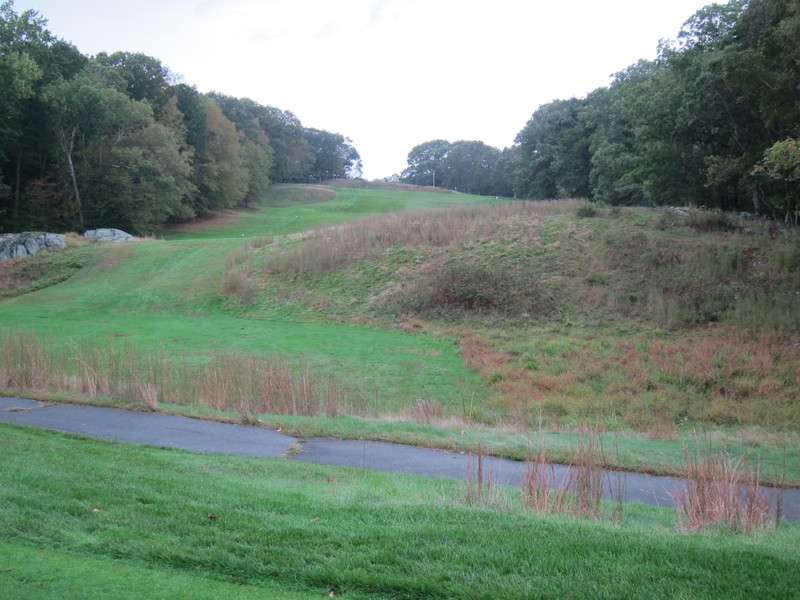

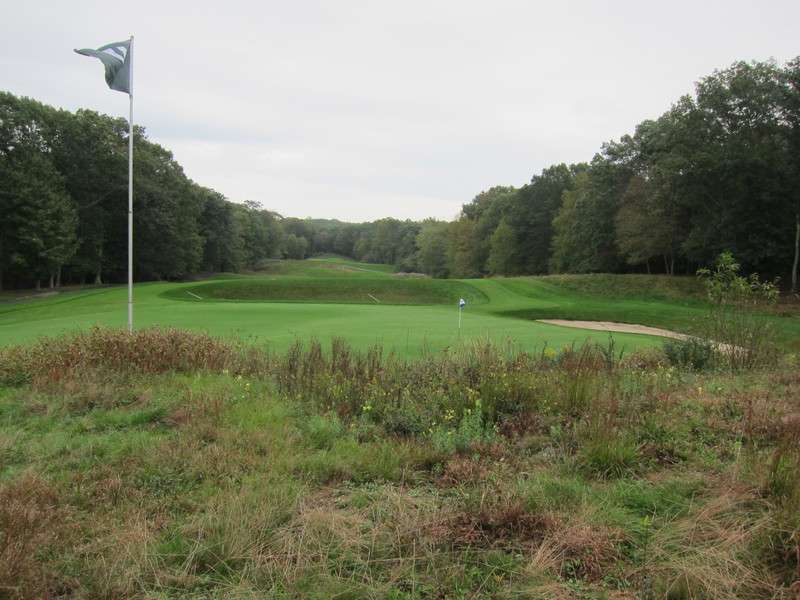
Regrettable as the inevitable comparison of sibling holes is, Darius was not wrong when he wrote that the Short, Redan and Eden at Yale aren't the holes that their siblings in Long and Fishers islands are. But he also failed to make mention of the Alps
12th (400/350), which for my money is deserving of discussion alongside National's version of the template. The green is among the best on the course, two tiers positioned side-by-side, making for a tough two-putt if you find yourself on the wrong level of the green, which is completely blind from the driving zone. Even with a wedge in hand it's a tough shot, so I can't imagine the difficulty with pre-WW2 equipment.
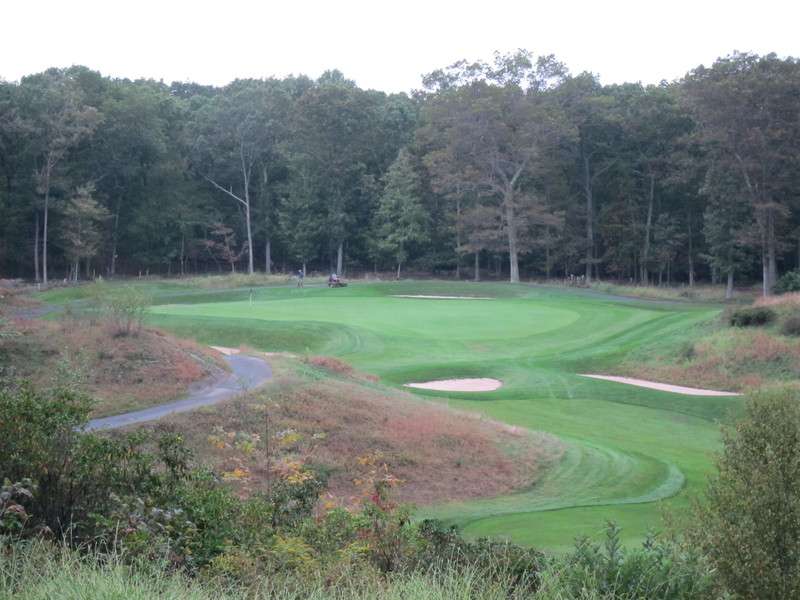
I'll concede the the
13th (212/196) doesn't look much like a Redan from the tee, but the green has all you could ask for, including a false front (?!) that may detract from its Redan-esque qualities (Redanishness? Redanocity?), but gives the hole another talking point. Perhaps despite not being among the best Redans in the family, his is an example of the fact that -- like the 4th at Riviera -- a hole doesn't need to look faithfully like the 4th at National or the 15th at North Berwick to share some of what is great about playing those holes.
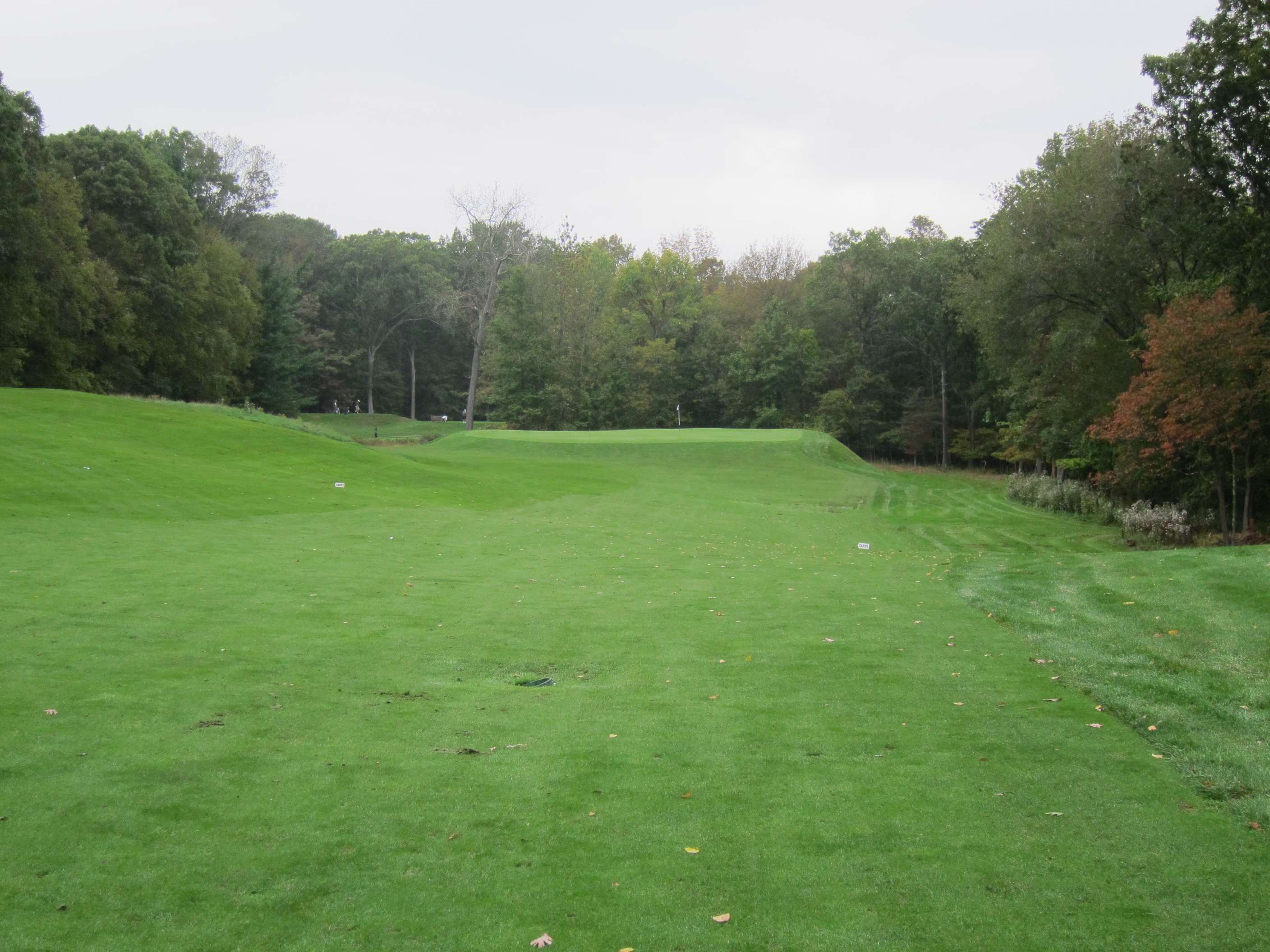
At
365/343 yards, the
14th (Knoll) is the perfect length (pic your tee) for the challenge presented by the drive, which asks you to try to drive as far around the dogleg and you can -- aided by the steep slope down the left to try to end up with as flat a lie as possible for the approach. This isn't a green you want to be playing a mid iron to. Right? Bad. Left? Bad. Short? Bad. Long? Yep, bad and wet. To add to the difficulty, there's every chance your second shot will be played from a lie that slopes both downhill and to the right. Just another example of distance being only one way to built difficulty and far from the best way to generate interest.
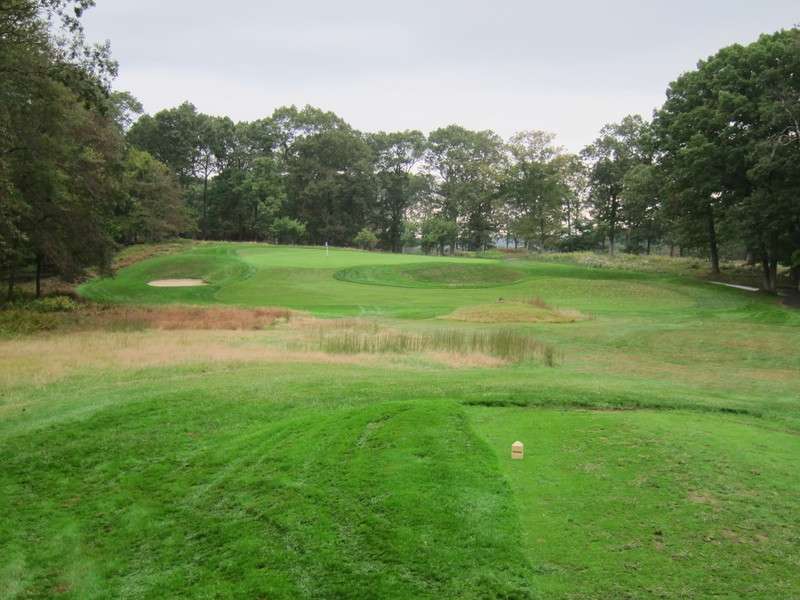 15th hole (190/165)
15th hole (190/165) is a great little Eden hole that does a good job of replicating a few of the features of the original in as different a setting as you could get. As with several of the earlier holes, the green is far slicker than it appears, putting an even greater premium on ensuring you stay below the hole.
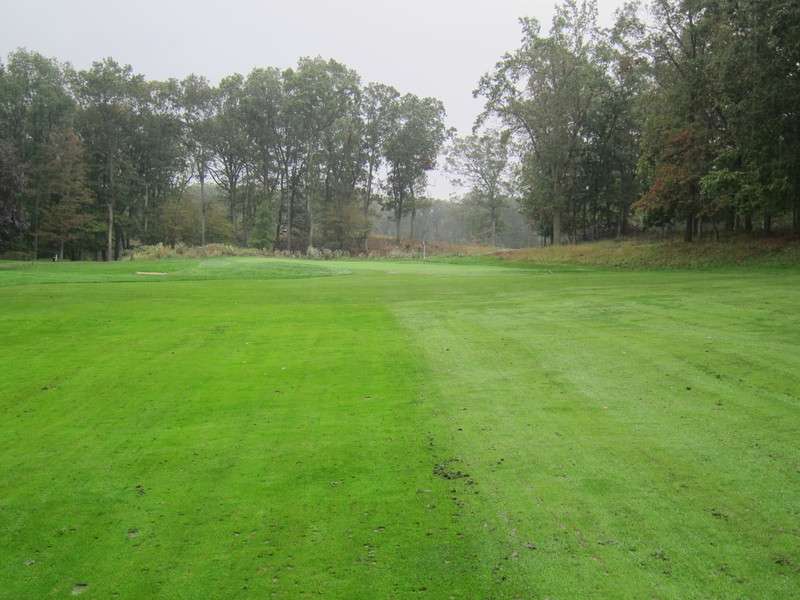
Unfortunately, owing to my decision to duck into the clubhouse to grab a sandwich before we set off, the three of us got stuck behind a ridiculously slow fourball and as a result, we were caught by the most glacial golfer I have ever come across (no surprise he was playing alone...) by the 8th. We asked him to play through, he said he'd prefer to join us, and that is how we got to spend a little time with Lee. Well, as a result of that we had only made it to the
16th (553/474) by the time the rain grew tired of holding offand dumped on us. If we'd gone off before that fourball, we'd have been done by then, no doubt. We percivered through the 16th, but it had become impossible to swing the club, so we walked the last two holes and didn't play them. My memories of the 16th are probably sullied by the weather (and the realisation it was my fault we were copping it), but it seemed to offer less than the rest of the course and brought an end to the scintilating run from 7 to 15.
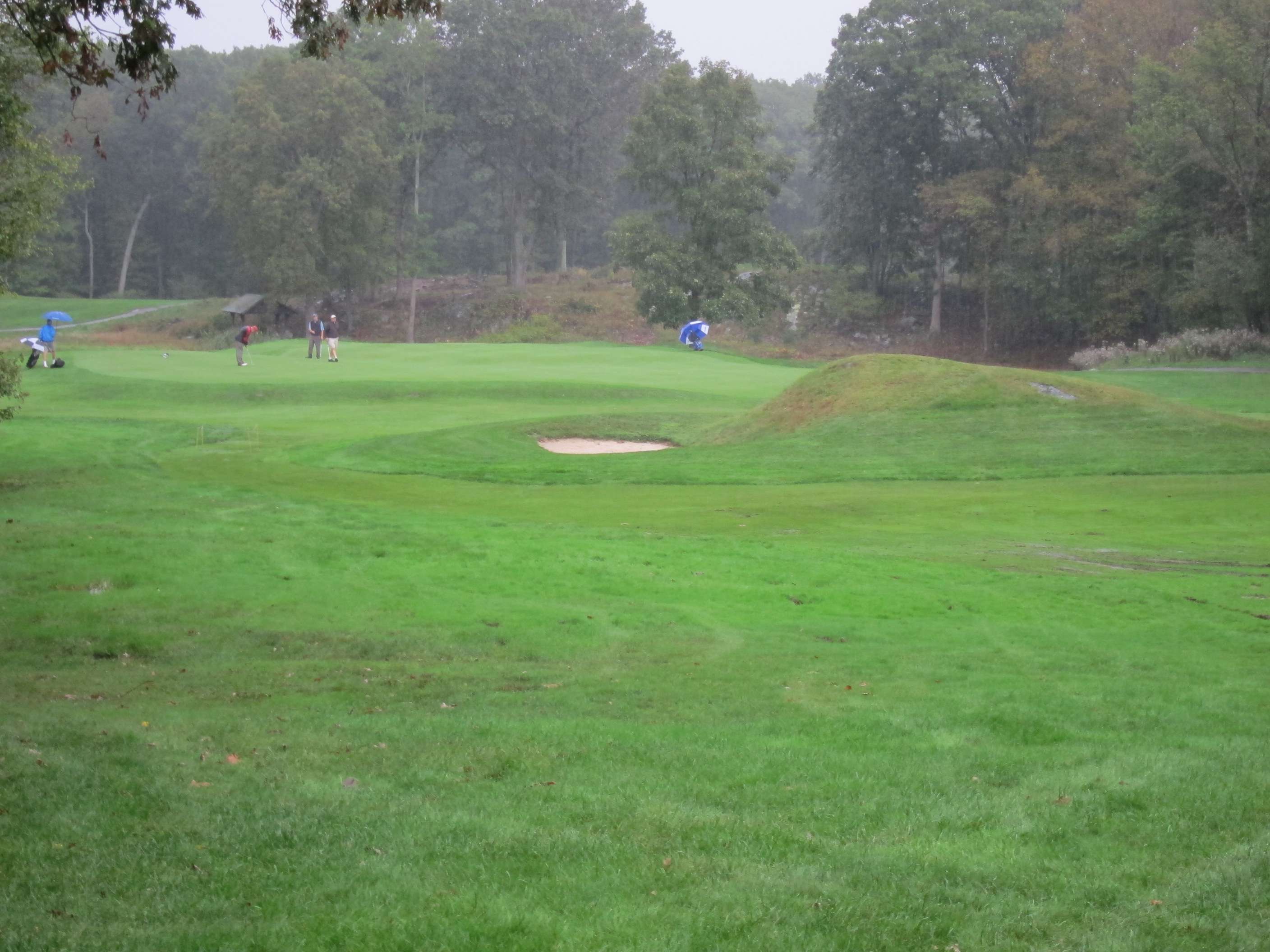
The uphill drive over a dam at the
17th (437/395) is fairly severe and scary, but at the length this hole plays, the Principal's Nose bunker complex 40-70 yards short of the Double Plateau green is perfectly placed and I was gutted I didn't get a chance to pit myself against it.
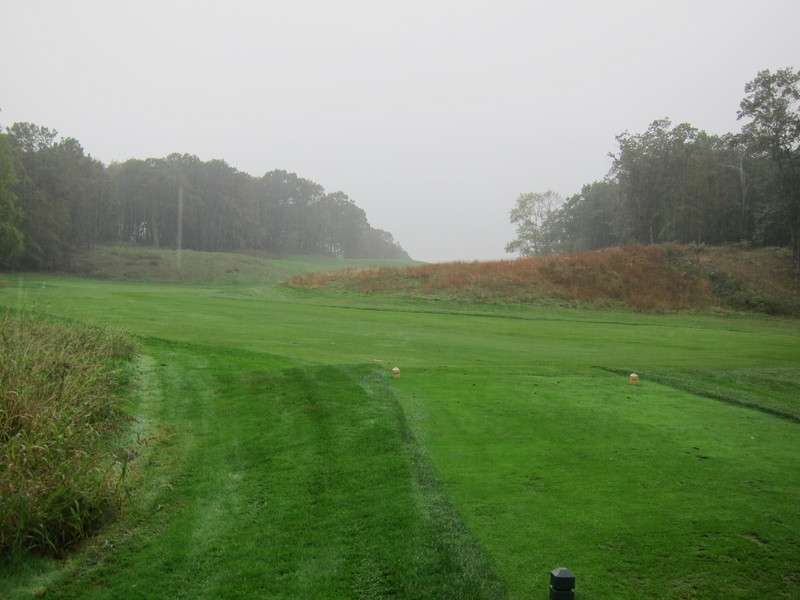
The
18th (621/542) is another unique hole that defies description. Twice blind, plenty of elevation change, alternate routes... damn that sandwich to hell! It sure was fun to walk, even in Biblical rain.
Yale deserves more than it receives in terms of discussion and rankings. It's as unique and fun as any course I have played, packed with variety and a must-play for any visitor to the north-east of the US.
Lee was last seen grinding over a 20-footer for double bogey on the 16th as the green flooded around him. Seriously.